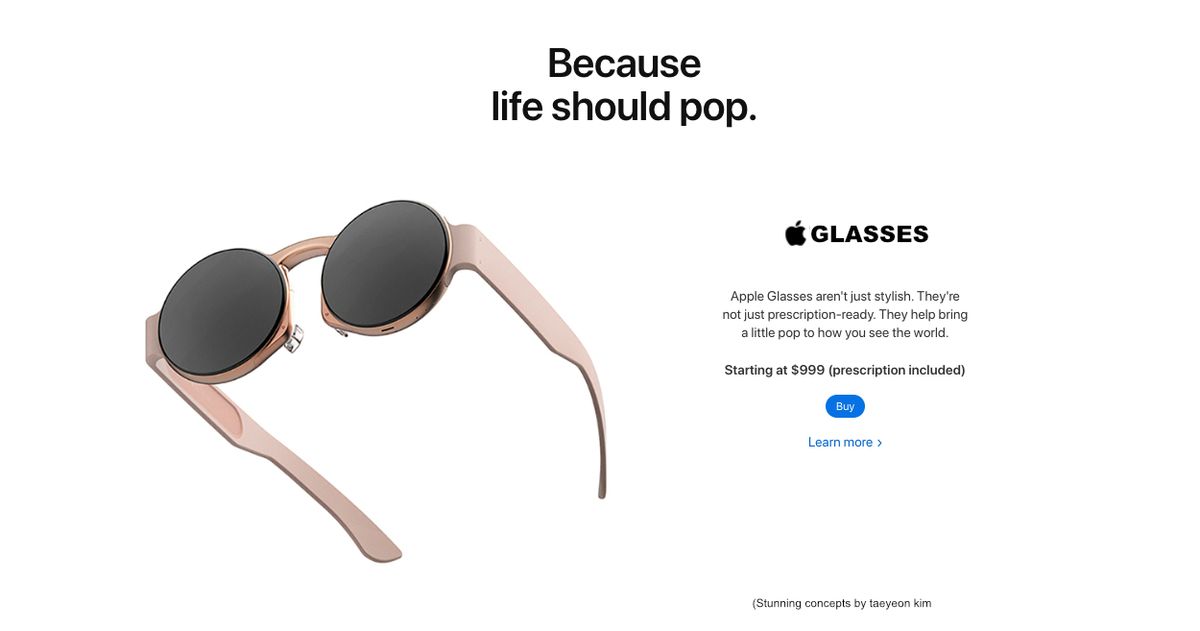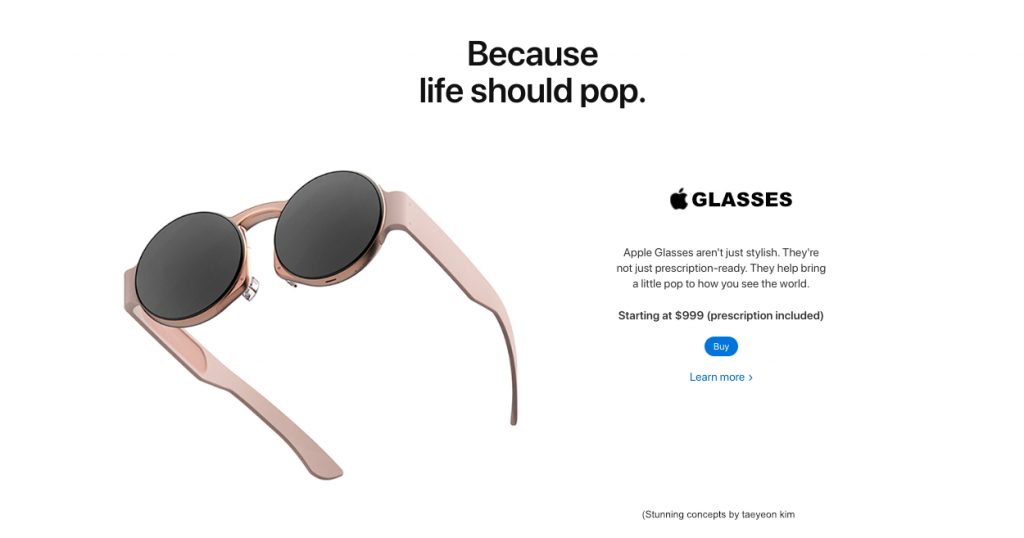Apple Doesn't Care About Augmented Reality: Here's Why

Apple Glasses aren’t being made for augmented reality. Apple just doesn’t care. But the reason they’ll launch the wearables is an order of magnitude more important than being able to place objects in the world around you,
Robert Scoble recently jumped into the debate on whether Apple is headed for a VR/AR or mixed headset future:
The devices Apple is building will start by showing you the real world and will augment it in various ways, up to ALMOST virtual reality. Why do I say “almost?” Because real virtual reality doesn’t let you see anything of the real world. The magic of VR is that you are fully “immersed” in virtual scenes. That’s why some call the industry that builds VR experiences “immersive.”
The Twitter thread on his post exposed the debate amongst the tech literate on whether VR or AR will lead the way, or whether we’ll see headsets that combine the two:
And yet the truth in these debates is that Apple won’t care.
In the, um, view of Apple, AR and VR are irrelevant.
The Biggest Market For Apple Glasses Is On Your Nose
Scoble makes an important point in evaluating whether VR represents a wide enough market for Apple. In his view (and, apparently, the view of many within Apple itself), VR just doesn’t move the needle:
Apple sells about 200 million phones every quarter. So, if you walk into Tim Cook’s office you have to show that your proposal will at least get to 20 million sold pretty quickly….What does? Eyeglasses. 60% of people wear eye glasses. So, if Apple can disrupt the eye glass market, like it disrupted the watch market, it can sell 10s of millions. So, the teams that are winning Tim Cook’s ear are those who are showing how Apple can disrupt eye glasses. Not teams that are disrupting VR.
And that’s the first important point: that the market Apple is disrupting isn’t for AR or VR or immersion or even augmentation. It’s eye glasses.
Boring and banal.
The global eyewear market size was valued at USD 138.7 billion in 2019,
– Grand View Research
Apple sold $10 billion worth of wearables in 2019 and outsold the entire Swiss watch industry:
“Neil Mawston, Strategy Analytics’ Executive Director added that “we estimate the entire Swiss watch industry together shipped 21.1 million units worldwide in 2019, falling 13 percent from 24.2 million in 2018.” According to Mawston, Analog wristwatches are popular among older consumers, and younger buyers are tipping toward smartwatches like the Apple Watch.“
So, let’s say that Apple can pull off a similar feat. If it can grab 13% of the market for glasses, that’s an $18B market, nearly double the current Apple wearables business to date.
The Secret Weapon For Apple Glasses
Steve Jobs famously quoted Alan Kay in saying that “people who are really serious about software should make their own hardware.”
But I’d amend this for the current age:
People who are really serious about software should make their own hardware and own the channels of distribution. It’s the only way you can build the real value, which is services.
And Apple has those channels of distribution. There’s perhaps no company on the planet who has the online and retail capacity to move glasses.
And perhaps key to moving those glasses is that they’ll be prescription-ready from the beginning.
Apple can set up the entire production and distribution chain so that you getting that most boring of things: a pair of glasses that can help you see.
Heck, they could even throw in eye exams.
Head to your Apple store, have an Apple Genius give you an eye test, browse for a frame you like, have the lenses produced and have your new Apple Glasses fitted and ready to wear in a few days.
Even if Apple Glasses did nothing more than look good, they’ve suddenly disrupted a $138B market.
Warby Parker grew to be a $340M company by 2018 based on not much more than a website and some cheap cool frames.
Apple on the other hand knows how to push a $17,000 watch, has 508+ stores around the world, and a massive digital distribution platform (and close to a billion customers using its phones).
But Apple won’t just be content to take a chunk out of the market for people who need glasses. They’d love to pair every one of the nearly billion iPhones sold with another device.
Why AR Doesn’t Matter
Your father isn’t worrying about when augmented reality will finally arrive for the masses. He isn’t much interested in VR either.
And they have the same feelings in Cupertino.
The point of Apple Glasses won’t be to ‘bring AR to the masses’. It will be to create a wearable product that’s beautiful and that does beautiful things.
And so Apple will be working to strike a balance: “how do we make these glasses beautiful while providing a fantastic user experience? If something doesn’t help us achieve this balance, we shouldn’t do it”.
And much of augmented reality, at least for the next 3-5 years, won’t make the cut.
Second, Apple will be heavily focused on the services layer from the beginning. Hardware plus software plus distribution = platforms for services. It’s the new mantra from Apple.
Apple Glasses can help.
Maybe the hardware itself is a service: prescription glasses that are ‘refreshed’ once every two years. But more important, Apple will look at any feature built into its glasses as a potential way to enhance its services business.
“Rich” AR might play a role at some point, but it will be years before a market for this type of content becomes subscription-ready.
Lessons from Magic Leap
Magic Leap didn’t bother trying to strike this balance between aesthetics and capabilities. It wasn’t necessarily a bad decision, but they set overly-high expectations.
Their premise was that if they could create a stunning user experience, the hardware would, eventually, follow. They made a bet on trying to blow your socks off. They wanted whales jumping up in the school gymnasium.

In a sign of how serious they took their transformative message, they hired Neal Stephenson to help evangelize Magic Leap as the stepping stone to the Metaverse (which Stephenson coined). He helped to focus on the challenges of creating richly immersive experiences when layered on reality itself:
“The toolchain that is used by the game industry is the toolchain — game engines, and Maya, and Photoshop, and all of that stuff — you need to use. But you need to use it in a radically different way,” said Stephenson. “None of the standard operating procedures of the game industry are directly transferable, because the interface is different, and you don’t control the world. You can add [virtual] things to the real world, but you don’t get to decide where the [real-world] chair is. The chair is where it is, and you have to deal with that, and that’s hard. It’s a really interesting challenge.”
Magic Leap saw the road to AR as one that runs through other immersive technologies: VR, games, and development tool chains spanning Maya and Unreal and richly-detailed 3D renders.
If I could play a stunning game in my living room, the thinking went, then I wouldn’t mind so much how bloody ugly the headset might be.
Magic Leap was competing, in other words, in the market for at-home devices, from game consoles to the Oculus Rift and Quest. Which was fine if their initial devices were just prototypes and weren’t hyped as the next big thing in computing.
In the month after release, they reportedly sold 6,000 devices, and have since decided that instead of competing for the living room, they’d compete for the operating room or factory floor.
The form factor doesn’t matter so much at your job.
But Apple isn’t interested in factory floors. How the device looks will matter. And how much you need to pack IN to that device has a major impact on how it looks.
Apple Glasses Might Not DO Very Much
So back to our premise: Apple will want to make beautiful glasses. Those glasses won’t look very good if they’re packed with batteries, sensors, and all of the technology needed to render that mythical Magic Leap whale.
Tom’s Guide did a good breakdown of what’s known and what we might be able to predict about the specs for Apple Glass. But the review is typical of the assumptions of what they’ll do:
Assuming you’re not running 3D AR apps all of the time and are periodically looking at notifications and 2D apps in between, Apple should be able to find a way to make Apple Glasses last through an average workday, though it may not happen in the first generation.
Everyone is starting from the same premise: that what Apple launches will NEED to support 3D AR applications.
But there’s nothing that says that this is required. At least not in the first generation of Apple Glasses.
Even in the short term, the hardware isn’t there yet, and the ability to create superrealism with proper occlusion and lighting could ‘bulk’ up the glasses so much that they tip from ‘beautiful’ to ugly.
But if we take rich 3D off the table, if Apple Glasses don’t necessarily tackle the tough challenges of blending 3D into the physical world in a magical way (that whale), it doesn’t mean that Apple Glasses won’t be pretty damn cool.
Apple Glasses: “Because Life Should Pop”
I can think of dozens of use cases for Apple Glasses. And most of them are based on extending the devices that you already have.
Your iPad already has a LiDAR scanner (and so will your iPhone). Your iPhone will already have ultra-wideband, Bluetooth LE and 5G. Your Apple TV is already streaming media and is increasingly becoming a platform for games.
And so the first thing that Apple Glasses will do, similar to the first things that Apple Watch did, is to extend the utility of the devices you already use.
I call this the “POP” principle.

Apple Glasses could first focus on how to make reality ‘pop’: how to enhance it, how to enhance existing apps, and how to enhance existing screens like iPads, iPhones and Apple TV:
- Your Apple Glasses work seamlessly with your screens to create night, day, dusk, indoor and outdoor settings. Similar to progressive lenses, Apple Glasses don’t just adjust on their own, they adjust in perfect harmony with your screens
- Apple Glasses can “pop” how the real world LOOKS. Again, not unlike progressive lenses, but this time similar to how you can use LUTs and other filters in a live camera view on your phone. Cloudy day? Apple Glasses will boost the blues and reds to make it a bit less gloomy. Think of it as a real-time photo filter for the physical world that’s always on.
- Apple Glasses work with all your favourite apps. Just like you can extend Twitter to your Apple Watch, you can now also “pop” it to your glasses. Subtle notifications at the side of the lens help you to stay on top of incoming app notifications. With a simple glance you can dismiss or choose to view them on your Apple Watch or iPhone.
- Watching Apple TV? Watch it in perfect colour. Apple Glasses colour correct based on the room lighting to present Apple TV movies in the colours in which they were meant to be seen. This feature is available with your subscription to Apple TV.
- Listening to music? Just like hearing aids that are used behind the ear, Apple Glasses work in perfect synch with your Air Pods, subtly correcting the sound, boosting the highs and lows, and giving you studio-perfect sound. This feature is available with your subscription to Apple Music.
Apple Glasses also work seamlessly with HomeKit devices and Apple Air Tags.
Pop Reality for Different Abilities
Nothing will display the power of Apple Glasses to ‘pop’ reality as much as how they help the differently abled to interact with the world.
In fact, developing wearables for the visually or hearing impaired will have been one of the main goals from the start.
Apple Glasses will help the blind to navigate physical spaces. And they will be FDA-approved as hearing aids for the auditory impaired.
Augmented Reality is Coming. Apple Glasses Will Come First
We tend to think of augmented reality as 3D content seamlessly blended with the physical world. Magic Leap helped to set this expectation, and their bet was that if the experience had enough ‘wow’ that we’d forgive the style or portability of the device. (Pro tip: they didn’t).
Apple doesn’t work that way. Apple won’t sacrifice aesthetics. And it won’t launch 3D support in glasses until it looks really real and has compelling use cases.
Yes, they’re all-in on augmented reality. But when it comes to the design decisions that will go into the first version of glasses, they’ll take a broader view: there’s a $138B market for glasses alone, and close to 1B iPhone owners who they can tap into, 40% of whom don’t need glasses.
The developers working on ARKit might be waiting to launch 3D games that you can play in your living room, removing the need to hold up your iPad or iPhone because you can play it through your Apple Glasses instead.
Apple won’t ignore this group. They’ll help to “pop” AR experiences on devices by using Glasses to extend the screen, or using glance recognition as a new input device. But that doesn’t mean your 3D content will render out in Call of Duty, fully-occluded and ray-traced glory.
Apple will focus first on how entering a new wearables category can fundamentally improve their user’s lives. And there are dozens of ways they can accomplish this without needing to tackle 3D content at the start and by using only the lightest touch for augmented overlays.
By launching prescription-ready glasses, using their massive retail and online footprint, and by extending the devices you already have, Apple will help to make reality “pop” a little bit more, and will launch a platform that will grow to become the next major platform for computing…but a growth that will happen all in good time.